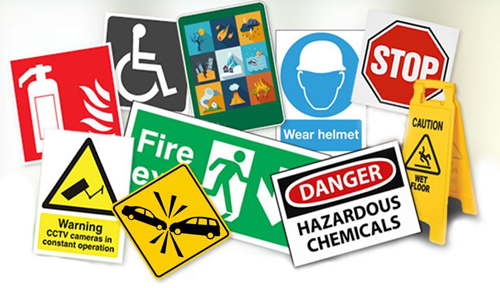پيشبيني تابآوري مديران بحران وزارت راه و شهرسازي بر اساس تنظيم شناختي هيجاني
ارتقای ایمنی و پیشگیری از مصدومیت ها,
دوره 5 شماره 4 (2017),
13 اسفند 2018
,
صفحه 218 - 213
https://doi.org/10.22037/meipm.v5i4.20731
چکیده
سابقه و هدف: مديريت بحران و بلايا نيازمند ويژگيها و تواناييهايي براي کنترل و اداره شرايط استرس زا و بحراني است. تابآوري و مديريت هيجانها ازجمله تواناييهاست که ميتواند براي مديران بحران در کنترل چنين شرايطي نقش تعيينکننده داشته باشد. اين مطالعه باهدف پيشبيني تابآوري مديران بحران وزارت راه و شهرسازي بر اساس تنظيم شناختي هيجاني انجامشد.
روش بررسي: مطالعه از نوع توصيفي همبستگي است که بر روي 136 نفر از مديران بحران وزارت راه و شهرسازي به روش نمونهگيري در دسترس انجام شد. بهمنظور رعايت ملاحظات اخلاقي، پس از اخذ رضايت کتبي از شرکتکنندگان، مقياس سنجش تابآوري کونور و ديويدسون و تنظيم شناختي هيجاني گارنفسکي اجرا گرديد. اطلاعات توسط ضريب همبستگي پيرسون و اسپيرمن و رگرسيون خطي چندگانه به شيوه گامبهگام تحليل گرديد.
يافتهها: تحليل دادهها نشان داد که مؤلفههاي تنظيم شناختي هيجاني پيشبيني کننده تابآوري در مديران بحران بود. مديران بحراني که مؤلفههاي تنظيم شناختي هيجاني سازگار داشتند، از تابآوري بيشتري و مديران بحراني که مؤلفههاي تنظيم شناختي هيجاني ناسازگار داشتند، از تابآوري کمتري برخوردار بودند (R2=0/342).
نتيجهگيري: يافتههاي اين مطالعه در تفهيم لزوم توانمند بودن مديران بحران براي رويارويي با شرايط و موقعيتهاي غيرمترقبه و بحراني مفيد خواهد بود. سازمانهاي مرتبط با مديريت بحران در ارزيابي مديران ميتوانند از اين نتايج بهره بگيرند.
How to cite this article:
Ghanbari K, Nazari Kamal M, Ghaebi N, Samouei R. Prediction of Resilience and Emotional Management Based on Cognitive Emotional Regulation in Crisis Management of the Iranian Ministry of Roads and City Planning. J Saf Promot Inj Prev. 2017; 5(4): 213-18
- تابآوري، تنظيم شناختي هيجاني، بحران، بلايا، مديران بحران
ارجاع به مقاله
مراجع
Veissi M, Atefvahid M K, Rezaee M. Job Stress, Job Satisfaction and Mental Health: The Balancing Effects of Personal Hardiness and Social Support Network Factors. IJPCP. 2000; 6 (2 and 3):70-79.
Joseph S, Williams R, Irwing P, Cammock T. The preliminary development of a measure to assess attitudes towards emotional expression. Personality and Individual Differences. 1994; 16(6):869-75[Scopus].
Rahimian Boogar E, Asgharnejad Farid AA. The relationship between psychological hardiness also ego-resiliency and mental health in adolescent and adult survivors of bam earthquake. Iranian Journal of Psychiatry and Clinical Psychology. 2008; 14(1):62-70.
Tugade MM, Fredrickson BL. Resilient individuals use positive emotions to bounce back from negative emotional experiences. Journal of personality and social psychology. 2004; 86(2):320-33[Pub Med].
Inzlicht M, Aronson J, Good C, McKay L. A particular resiliency to threatening environments. Journal of Experimental Social Psychology. 2006; 42(3):323-36[Scopus].
Masten AS. Ordinary magic: Resilience processes in development. American psychologist. 2001; 56(3):227-38[Pub Med].
Friborg O, Hjemdal O, Rosenvinge JH, Martinussen M, Aslaksen PM, Flaten MA. Resilience as a moderator of pain and stress. Journal of psychosomatic research. 2006; 61(2):213-9[Pub Med].
Connor KM, Davidson JR. Development of a new resilience scale: The Connor-Davidson resilience scale (CD-RISC). Depression and anxiety. 2003; 18(2):76-82[Pub Med].
Bonanno GA, Mancini AD. The human capacity to thrive in the face of potential trauma. Pediatrics. 2008; 121(2):369-75[Pub Med].
Joormann J, Gotlib IH. Emotion regulation in depression: relation to cognitive inhibition. Cognition and Emotion. 2010; 24(2):281-98[Pub Med].
Garnefski N, Kraaij V. Relationships between cognitive emotion regulation strategies and depressive symptoms: A comparative study of five specific samples. Personality and Individual differences. 2006; 40(8):1659-69[Scopus].
Min JA, Yu JJ, Lee CU, Chae JH. Cognitive emotion regulation strategies contributing to resilience in patients with depression and/or anxiety disorders. Comprehensive Psychiatry. 2013; 54(8):1190-7[Pub Med].
Mohammadkhani S, Haddadi Kuhsar AA, Soleymani H, Eatemadi A, Seyd Ali Naghei SA. Prediction of resilience from cognitive emotion regulation in individuals with HIV infection. Scientific Journal Management System. 2017; 6(21):104-15.
Karreman A, Vingerhoets AJ. Attachment and well-being: The mediating role of emotion regulation and resilience. Personality and Individual differences. 2012; 53(7):821-6[Scopus].
Martin RC, Dahlen ER. Cognitive emotion regulation in the prediction of depression, anxiety, stress, and anger. Personality and individual differences. 2005; 39(7):1249-60[Scopus].
Roberton T, Daffern M, Bucks RS. Emotion regulation and aggression. Aggression and violent behavior. 2012; 17(1):72-82.
Eisenberg N, Fabes RA, Guthrie IK, Reiser M. Dispositional emotionality and regulation: their role in predicting quality of social functioning. Journal of personality and social psychology. 2000; 78(1):136-57[Pub Med].
Samouei R, Abedi MR, Ferdosi M. The absence of positive psychology in disasters. International Journal of Health System and Disaster Management. 2014; 2(4):241-5.
Mohammadi Masoud. Factors Affecting Resilience in People at Risk of Substance Abuse. PhD thesis of clinical psychology. University of Rehabilitation Sciences and Social Welfare, 2005.
Garnefski N, Kraaij V, Spinhoven P. Manual for the use of the Cognitive Emotion Regulation Questionnaire. Leiderdorp, The Netherlands: DATEC. 2002.
Hashemi Z, Joker B. Emotional Resilience Modeling: The role of attachment to parents and peers, coping strategies and cognitive regulation of emotions. Psychological Studies of Alzahra University Faculty of Educational Sciences and Psychology 2013;9(1):37-9.
McGee R, Wolfe D, Olson J. Multiple maltreatment, attribution of blame, and adjustment among adolescents. Development and psychopathology. 2001; 13(4):827-46[Pub Med].
- چکیده مشاهده شده: 266 بار
- PDF دانلود شده: 82 بار
